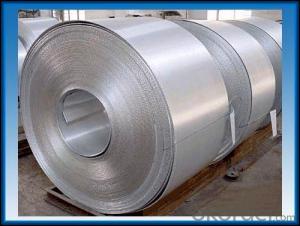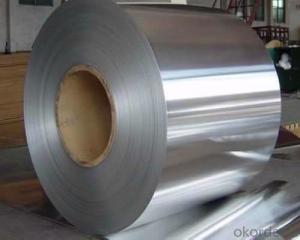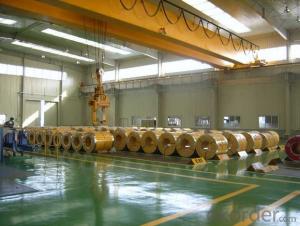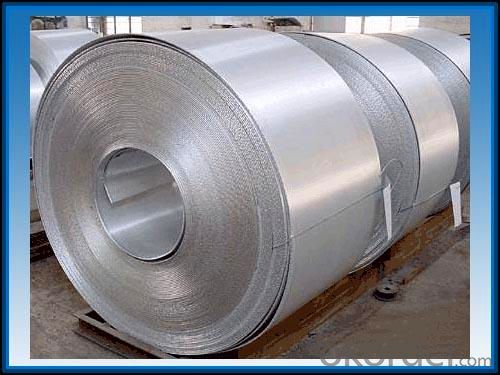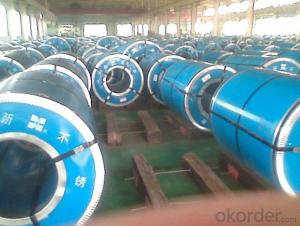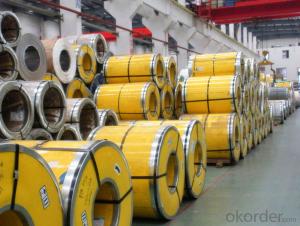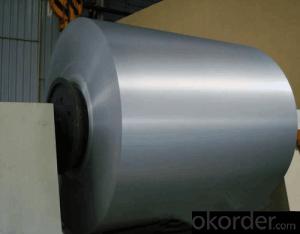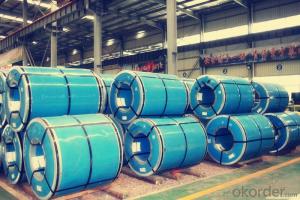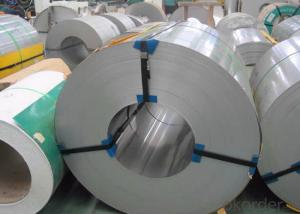Stainless Steel Coil Cold Rolled 304 Surface BA With Good Quality
- Loading Port:
- Shanghai
- Payment Terms:
- TT OR LC
- Min Order Qty:
- 100 m.t.
- Supply Capability:
- 8000 m.t./month
OKorder Service Pledge
OKorder Financial Service
You Might Also Like
Stainless Steel Coil Cold Rolled 304 Surface BA With Good Quality
1.Structure of Stainless Steel Coil Cold Rolled 304 Surface 2B With Good Quality
Cold Rolled stainless steel Coil with good quality is one of the raw material of the cold rolled stainless steel Coil, which can be used directly in many places. Stainless Steel (Stainless Steel) is short for acid-proof Stainless Steel, resistant to weak corrosive medium such as air, steam, water, or with a Stainless Steel grade.
2.Main Features of Prefabricated Steel Structure High Building Project
Weldability: The purpose of the different requirement for welding performance are different.1 Kind of tableware generally do not require the performance of welding, even including some pot class enterprise. But the vast majority of products all need raw materials welding performance is good, like the 2 kinds of tableware, thermos flask, steel pipes, water heaters, water dispensers, etc.
3. Stainless Steel Coil Cold Rolled 304 Surface 2B With Good Quality Images
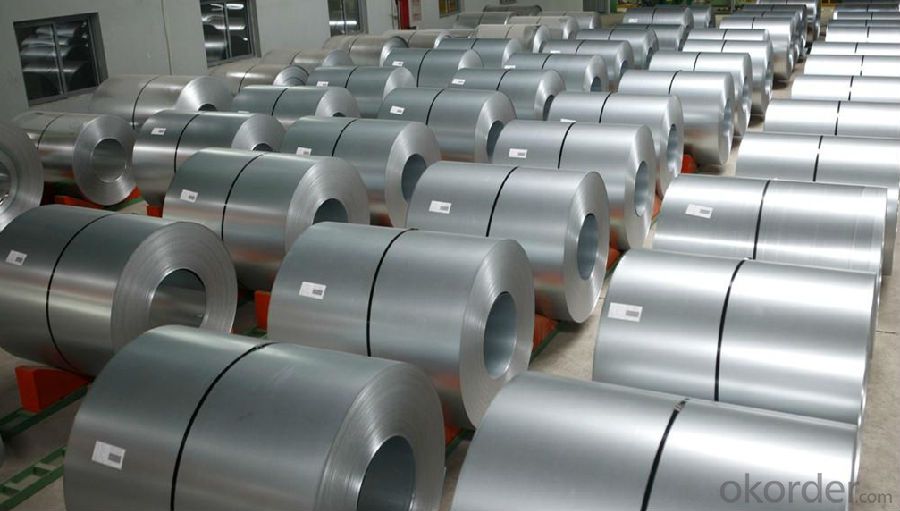
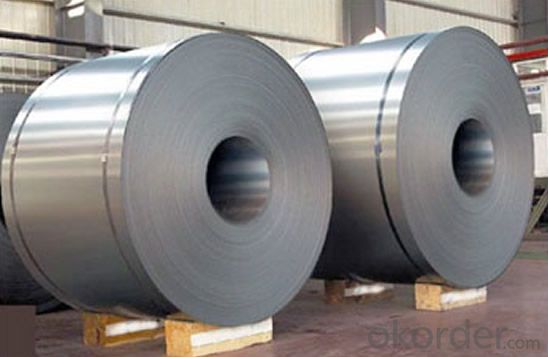
4. Applications of Stainless Steel Coil 304 With Good Quality
1. Kitchenware: tableware, cookware, Stoves…
2. Food packing: storage cans, food containers…
3. Construction: bridge, roofing, wall, decoration, bathroom accessories…
4. Precision instruments: electrical products, aerospace…
5. Others: automotive parts, machine building, chemical processing, farming…
5.FAQ of Stainless Steel Coil 304 With Good Quality
We have organized several common questions for our clients,may help you sincerely:
①How about your company?
A world class manufacturer & supplier of castings forging in carbon steel and alloy steel,is one of the large-scale professional investment casting production bases in China,consisting of both casting foundry forging and machining factory. Annually more than 8000 tons Precision casting and forging parts are exported to markets in Europe,America and Japan. OEM casting and forging service available according to customer’s requirements.
②How to guarantee the quality of the products?
We have established the international advanced quality management system,every link from raw material to final product we have strict quality test;We resolutely put an end to unqualified products flowing into the market. At the same time, we will provide necessary follow-up service assurance.
③How is the packaging and delivery?
Standard export packing (Coil: waterproof paper + protective steel ring; Circle: wooden box), or as your requirement and the delivery term is based on the project.
- Q: What are the advantages of using narrow width 111 stainless steel strips?
- Using narrow width 111 stainless steel strips has several advantages. To begin with, the narrow width allows for more precise and accurate cutting, making it perfect for applications that require tight tolerances. This is particularly beneficial in industries like automotive, aerospace, and electronics, where precision is of utmost importance. In addition, narrow width stainless steel strips are often more cost-effective when compared to wider strips. This is because they require less material, reducing production costs and waste. Moreover, their narrower width enables more efficient use of storage and transportation space. Moreover, narrow width strips offer greater flexibility in terms of design and application. They can be easily shaped and formed into various products, including machinery components, appliances, and architectural features. This versatility makes them highly sought-after in industries that require customized solutions. Furthermore, narrow width 111 stainless steel strips possess excellent corrosion resistance properties. Stainless steel is known for its ability to withstand harsh environments, such as moisture, chemicals, and extreme temperatures. This makes it suitable for applications where durability and longevity are crucial, such as in the marine and chemical processing industries. Finally, narrow width strips provide an improved surface finish and aesthetic appeal. They can be polished, brushed, or coated to enhance their appearance, making them an attractive choice for decorative purposes or high-end products. In conclusion, narrow width 111 stainless steel strips offer advantages such as precise cutting capabilities, cost-effectiveness, flexibility in design, corrosion resistance, and improved surface finish. These benefits make them a preferred choice for a wide range of industries and applications.
- Q: What is the creep strength of stainless steel strips?
- The creep strength of stainless steel strips refers to the material's ability to withstand long-term deformation under elevated temperatures and constant load. Stainless steel is known for its excellent creep resistance due to its high alloy content and specific microstructure. The creep strength of stainless steel strips depends on various factors such as the alloy composition, heat treatment, and grain size. In general, stainless steel strips have a high creep strength compared to other materials, especially at elevated temperatures. The presence of elements like chromium, nickel, and molybdenum enhances the creep resistance of stainless steel, allowing it to maintain its shape and structural integrity for extended periods under constant load. Additionally, the heat treatment process plays a crucial role in optimizing the creep strength of stainless steel strips. Proper heat treatment techniques like annealing or solution treatment followed by aging can help to enhance the material's microstructure and reduce the formation of harmful phases, such as sigma phase, that can decrease creep resistance. The grain size of stainless steel also affects its creep strength. Fine-grained stainless steel strips tend to exhibit better creep resistance compared to coarse-grained ones. This is because fine grains hinder the movement of dislocations, which are responsible for creep deformation. Overall, the creep strength of stainless steel strips is relatively high, making them suitable for applications that require resistance to long-term deformation and high temperatures, such as in power generation, aerospace, and chemical processing industries.
- Q: What's the difference between stainless steel coil and stainless steel plate?
- Stainless steel (Stainless Steel) is referred to as the stainless steel, the resistance of air, steam, water and other weak corrosive medium or with stainless steel known as stainless steel; while the resistance to chemical corrosion (acid, alkali and salt chemical etching) corrosion of steel called acid resistant steel.
- Q: How are stainless steel strips used in construction?
- Stainless steel strips are commonly used in construction for various purposes such as framing, structural support, and finishing touches. They are often utilized as reinforcement in concrete structures, providing additional strength and durability. Stainless steel strips are also employed in the fabrication of building components like beams, columns, and lintels due to their resistance to corrosion and high strength-to-weight ratio. Additionally, these strips are utilized for cladding and decorative purposes, adding a sleek and modern aesthetic to architectural designs.
- Q: What are the common uses of stainless steel strips in the mining industry?
- Stainless steel strips are commonly used in the mining industry for various applications such as conveyor systems, screening equipment, and storage tanks due to their durability, corrosion resistance, and high strength properties. Additionally, they are used in the construction of mining machinery, support structures, and extraction tools, as well as for lining pipes and vessels to withstand extreme conditions and prevent material degradation.
- Q: Can stainless steel strips be used in transportation applications?
- Yes, stainless steel strips can be used in transportation applications. Stainless steel is known for its strength, durability, and resistance to corrosion, making it suitable for various components in transportation such as vehicle frames, exhaust systems, and structural parts.
- Q: What is the tensile strength of stainless steel strips?
- The tensile strength of stainless steel strips can vary depending on the grade and thickness of the material. However, on average, stainless steel strips have a tensile strength ranging from 550 to 800 megapascals (MPa).
- Q: What are the factors affecting the machinability of 111 stainless steel strips?
- The machinability of 111 stainless steel strips can be influenced by various factors. 1) The chemical composition of the stainless steel, including the presence and ratios of different elements, can have a significant impact on its machinability. Elements like sulfur and phosphorus can form brittle compounds, making it more difficult to machine. Conversely, the addition of alloying elements like manganese, chromium, and nickel can improve machinability. 2) The hardness of the stainless steel strips can also affect their machinability. Harder materials require more cutting force and wear out cutting tools faster, making them more challenging to machine. On the other hand, softer stainless steel strips are generally easier to machine. 3) The microstructure of the stainless steel plays a role as well. The presence of certain phases, such as retained austenite or carbides, can impact chip formation and tool wear. The grain size and distribution within the material can also affect machinability. 4) The heat treatment applied to the stainless steel strips can influence machinability. Different heat treatment techniques, such as annealing, quenching, or tempering, can alter the material's hardness and microstructure, ultimately affecting how it can be machined. 5) Selecting appropriate cutting parameters is crucial for achieving good machinability. Factors such as cutting speed, feed rate, and depth of cut need to be optimized based on the specific stainless steel grade and its properties. Finding the right balance is essential for efficient and accurate machining. 6) The choice of cutting tools and their material composition and geometry can significantly impact the machinability of stainless steel strips. Tools with higher hardness, wear resistance, and suitable chip evacuation geometry are generally preferred for machining stainless steel. 7) Proper lubrication and coolant during machining operations can improve machinability. Lubricants reduce friction and heat generation, while coolants aid in chip evacuation and prevent tool wear. By considering these factors and optimizing the machining process accordingly, it is possible to enhance the machinability of 111 stainless steel strips and achieve the desired results.
- Q: What are the typical tolerances for stainless steel strips?
- The tolerances for stainless steel strips differ based on the application requirements and manufacturing process employed. Typically, the industry adheres to standard tolerances ranging from +/- 0.005 to 0.010 inches for thickness and +/- 0.010 to 0.020 inches for width. These tolerances guarantee that the stainless steel strips meet dimensional requirements and are suitable for automotive, aerospace, and construction industries. Notably, more precise tolerances can be attained through specialized manufacturing techniques and the use of precision equipment.
- Q: Can stainless steel strips be used for electrical conductivity?
- Typically, stainless steel strips are not utilized for electrical conductivity. Although stainless steel possesses a degree of electrical conductivity, it remains relatively low in comparison to metals like copper or aluminum. Consequently, stainless steel strips are infrequently employed in applications demanding high electrical conductivity.
Send your message to us
Stainless Steel Coil Cold Rolled 304 Surface BA With Good Quality
- Loading Port:
- Shanghai
- Payment Terms:
- TT OR LC
- Min Order Qty:
- 100 m.t.
- Supply Capability:
- 8000 m.t./month
OKorder Service Pledge
OKorder Financial Service
Similar products
Hot products
Hot Searches
Related keywords
